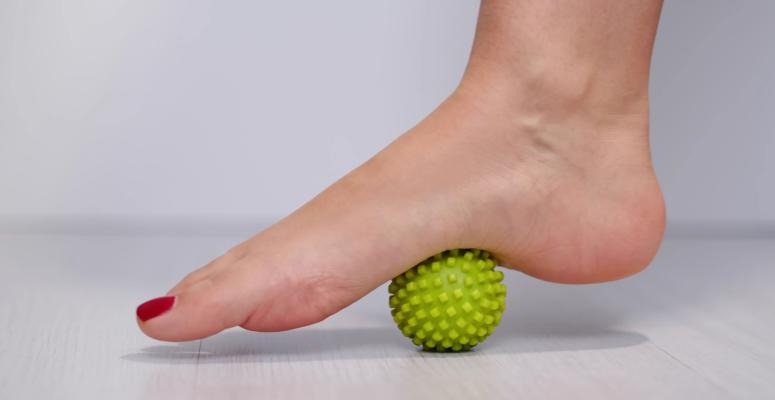
No matter what type of movement you’re doing on your feet, whether it be standing, walking or exercising, you put every part of your foot through a lot of wear and tear on a daily basis. And sometimes that gradual distress can cause a type of heel pain that can radiate throughout your foot with every movement.
Plantar fasciitis is one of the most common causes of foot pain, affecting 1 in 10 people throughout their lifetime. In fact, it’s the reason for about 1 million patient visits in any given year. But the good news is that physical therapy can help alleviate the pain.
Read on to learn about the ins and outs of plantar fasciitis, the benefits of treating the pain with physical therapy, and the techniques that your therapist might use.
The basics of plantar fasciitis
Plantar fasciitis refers to inflammation of the tissue that connects the heel of your foot to your toes. The band of tissue, called the plantar fascia, works as a shock absorber during steps and provides support to your arch.
Plantar fasciitis is usually the result of overuse and tension, which causes small tears in the plantar fascia. There are some factors that increase the risk of developing plantar fasciitis, including flat feet, obesity and age. Females are more than twice as likely to develop the condition than males, especially those between the ages of 45 and 64.
The main symptom of plantar fasciitis is pain that extends out from the heel. It can worsen while sitting or after an extended time of inactivity, such as sleep. The pain can also occur after exercising or activity, but usually not during.
Foot pain may be coupled with other symptoms including:
- Stiffness.
- Reduced mobility.
- Swelling.
- Redness.
- Burning sensation.
The benefits of treating plantar fasciitis with physical therapy
Physical therapy is one of the most effective treatment options for plantar fasciitis. The goal is to not only alleviate the pain but also improve the overall health of your foot to decrease the risk of future foot pain or injuries.
By seeking physical therapy for your plantar fasciitis, you can:
- Speed up recovery time.
- Increase your foot’s flexibility and strength.
- Learn exercises that you can do at home as a long-term solution.
- Decrease the chance of surgery.
- Reduce reliance on pain relievers.
4 physical therapy techniques for plantar fasciitis
There are several physical therapy techniques that your therapist may use to treat your plantar fasciitis. They will design a customized treatment plan based on the severity of your inflammation, medical history and physical abilities.
Your customized physical therapy treatment plan for plantar fasciitis may include:
- Manual therapy — Foot pain and reduced mobility are often treated with manual therapy. Your physical therapist will use their hands for techniques such as soft tissue mobilization and joint mobilization to help alleviate the pain and increase your ankle joint’s range of motion.
- Graston Technique® — For plantar fasciitis, your therapist may try the Graston Technique to break up tight or scarred tissue that’s causing your foot pain. This technique is a type of instrument-assisted soft tissue mobilization that utilizes stainless steel instruments to loosen up the tissue and release the tension.
- Gait analysis — It’s a possibility that your walk is a contributing factor to your plantar fasciitis, such as your feet rolling in or out with each step. Your physical therapist can analyze your gait and determine small changes that can decrease the strain on the plantar fascia and prevent the inflammation from recurring.
- Targeted exercises — One of the most effective ways to treat the symptoms of plantar fasciitis is through stretching and strengthening exercises. Your physical therapist will walk you through exercises to increase your foot’s strength and flexibility to decrease pressure on the joint and support your heel to reduce the risk of a flare-up.
Alliance PTP can connect you with physical therapy for plantar fasciitis
Plantar fasciitis can interfere with your quality of life, but physical therapy is here to help.
When you’re looking for plantar fasciitis physical therapy, Alliance Physical Therapy Partners can put you in touch with an Alliance PTP partner that’s close to you and that can help you address your heel pain.
Not keen on in-person PT sessions or not close to an Alliance PTP partner? No worries. We also offer effective and affordable virtual physical therapy through our Agile Virtual Physical Therapy platform.
Come find help for your injury or chronic condition today!
Get Help at a Location Near You
